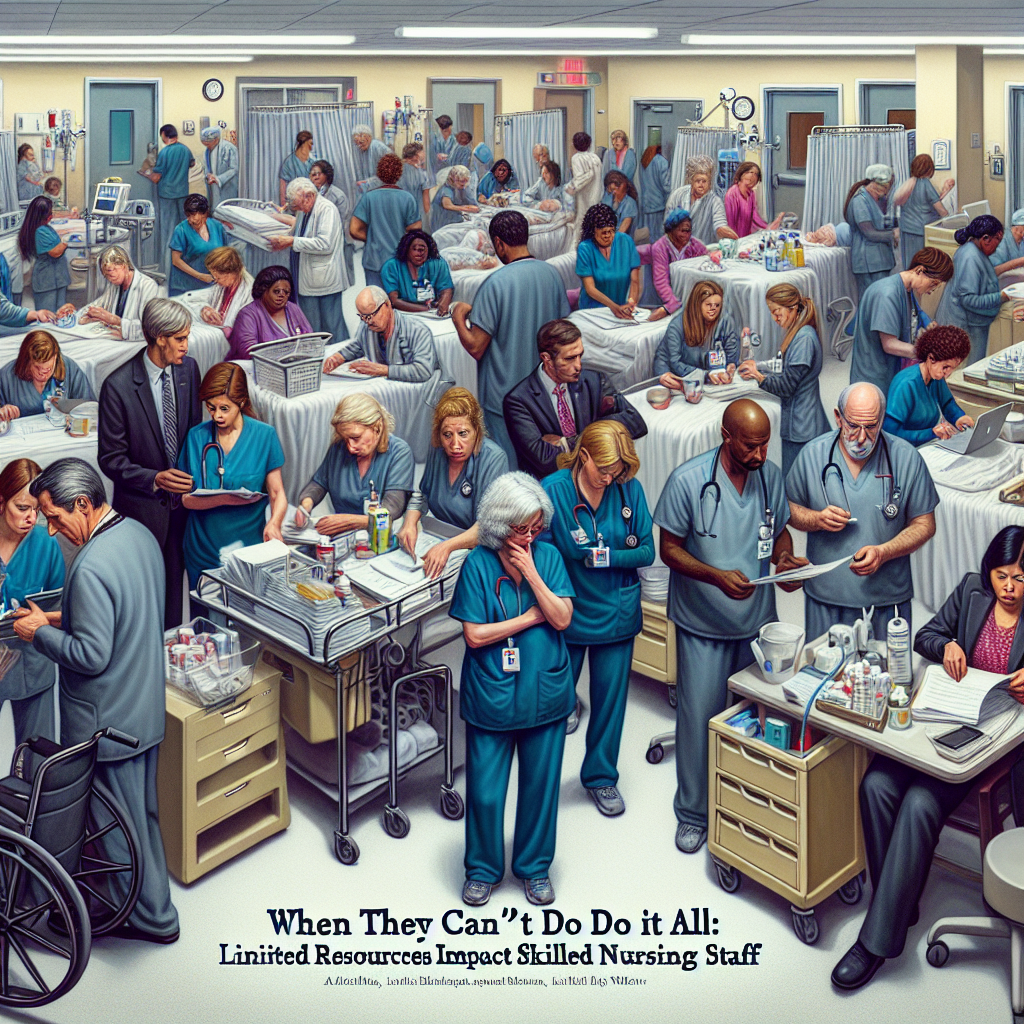New York, NY—The ongoing strain on skilled nursing facilities manifesting as acute shortages of staff and resources is pushing the health sector to a critical point. Faced with an aging population, the demand for skilled nursing care is skyrocketing, but facilities are finding it increasingly hard to keep up, raising significant concerns over the quality of care that can be provided.
In the heart of the challenges are skilled nursing staff, whose dedication and tireless efforts are foundational to patient care and recovery. Yet, they are stretched thin, battling not only the physical demands of their jobs but the emotional toll of being unable to meet all their patients’ needs due to resource limitations. The ramifications are far-reaching, impacting patient care, staff morale, and the overall efficiency of health services.
A striking statistic that sheds light on the gravity of the situation is that nearly 75% of skilled nursing facilities are facing staff shortages, with many reporting that these gaps significantly hinder their ability to accept new patients. This bottleneck threatens the sustainability of healthcare services, particularly for the most vulnerable populations relying on skilled nursing care.
Rita Sanders, a nurse with over a decade of experience in a New York skilled nursing facility, shares, “Every day we’re making tough decisions on how to allocate our time and resources. It’s heart-wrenching not being able to give every patient the attention they deserve. We’re doing our best, but the reality is, we’re human and we’re stretched too thin.”
The root causes of the staffing and resource crisis are multifaceted, stemming from a combination of burnout, competitive job markets, and insufficient funding. COVID-19 has only exacerbated these issues, with the pandemic pushing the healthcare infrastructure to its limits, leading to an exodus of skilled nursing professionals in search of less demanding roles.
Solutions to alleviate the strain on skilled nursing facilities and their staff are complex and require concerted efforts from all stakeholders. Increased funding, incentives to retain and attract staff, and innovations in care delivery are critical steps toward ensuring that skilled nursing facilities can meet the rising demand.
Investments in technology, such as telehealth and smart health devices, offer a glimmer of hope in bridging the gap. By optimizing operational efficiency and enabling remote monitoring, technology can ease the physical burden on staff and extend quality care to more patients.
The situation in skilled nursing facilities across the nation is a clarion call for immediate action. As we navigate a future where the demand for skilled nursing care will only grow, addressing the current challenges is imperative to safeguard the well-being of both patients and the professionals who serve them tirelessly. Without significant changes, the health sector risks a decline in care standards, underscoring the urgent need for systemic reform to ensure no patient is left behind due to limited resources.


